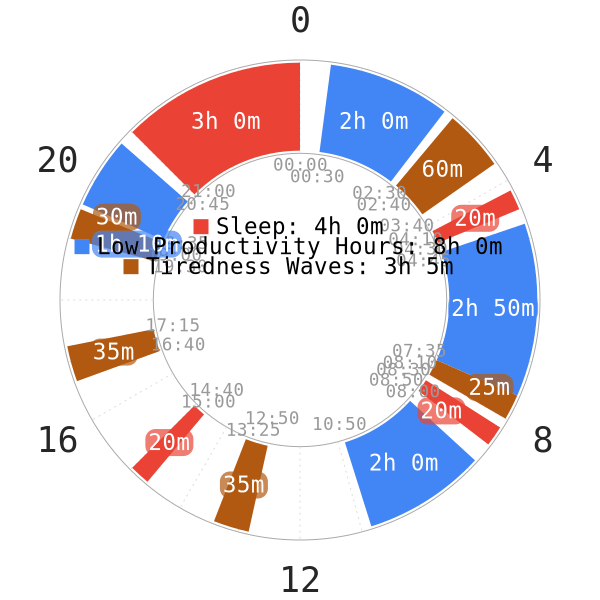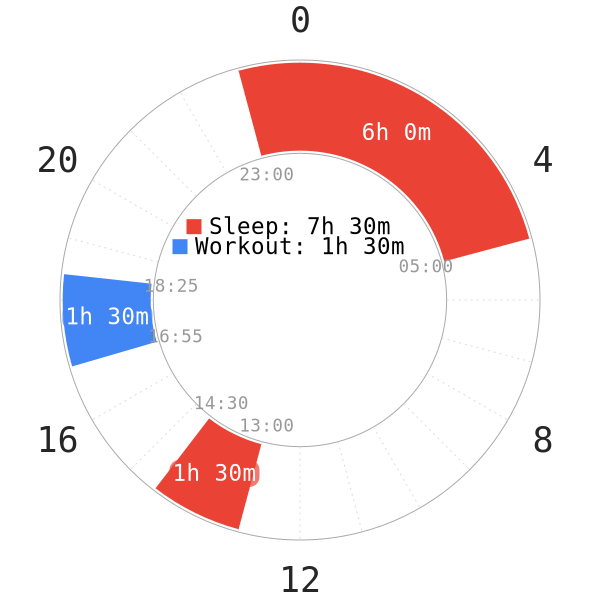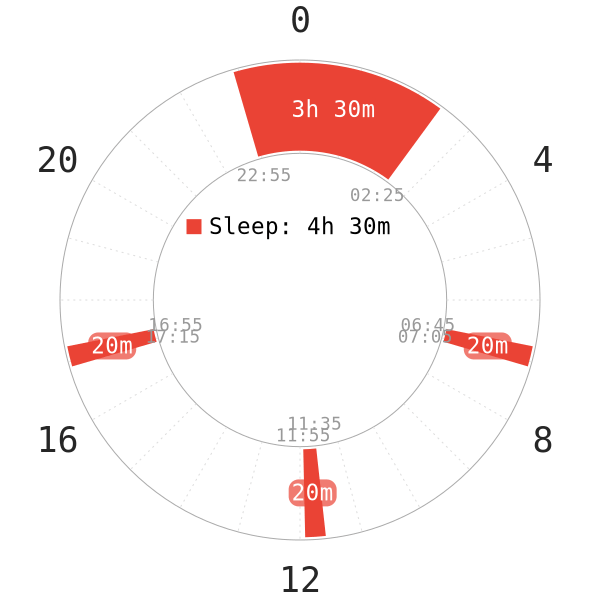Introduction
Even though polyphasic sleeping has a ton of advantages, it is not without weakness. The most common weakness seems to be the “inconvenience” of having to sleep more than once a day. But that is far from everything. This post will list the most problematic weaknesses that polyphasic sleeping possesses. It will also serve to deliver a more balanced point of view regarding this sleep regime.
Even though monophasic sleeping is not the end of the world, there are certain periods of time where no polyphasic schedules would suit or benefit personal goals and/or agendas.
Difficult Adaptation

Adapting to a polyphasic schedule is more difficult than people generally expect. Non-reducing schedules may appear easier, but they still require some efforts.
- 3+ weeks of substantial sleep deprivation will kick start and a recovery period will follow. This assumes everything goes well.
- It often requires implementing substantial changes in lifestyle to ensure the schedule can work. The body also has to discover ways to combat sleep deprivation to adapt to the new sleep regime.
- Most notably, the harder schedules with less total sleep time can have a very harsh learning curve.
Rigid Scheduling Weakness
Adaptation to polyphasic sleep usually works if one strictly adheres to the chosen schedule until adaptation is complete. The only exceptions are:
- Genetically reduced sleep stage requirements/short sleepers
- Non-reducing polyphasic schedules
In addition, there are also very flexible schedules like SEVAMAYL. Sleepers can also modify other schedules like E2 to increase flexibility. However, you have to adapt to the rigid “base form” of said schedule first. Then, learn to shift the sleep blocks around after the schedule has been stable for a few months.
Unconventional
Most of the world now runs on a monophasic schedule. Thus, not everyone will be capable of fitting a polyphasic sleep pattern into their social/working life.
- Not every employer allows naps during working hours.
- Consistent break times at school may not be possible.
- Socializing at night is not possible on a lot of schedules.
- In addition, the requirement of incorporating a dark period before sleep can be quite troublesome.
- Accidental events (e.g, loud neighbor parties) can affect your ongoing adaptation.
Restricted Activity

Depending on your chosen schedule, there are some activities that will not be possible, or will be substantially more difficult.
- Substantial exercise (weight lifting, HIIT, and similarly high-impact exercise) achieves muscle growth by damaging muscle tissue. Therefore, this requires additional SWS to repair. This also leads to the tradeoff between more sleep for physical activity, or less sleep but limited physical activities.
- Nightlife will also be very impractical with most schedules.
- While almost everyone can succeed with a polyphasic sleeping schedule, some people cannot reduce their sleep as much as others.
Stimulant Weakness
Quitting smoking, caffeine, alcohol and many other drugs during adaptation is somewhat of an advantage for polyphasic sleep. This is because each of these can substantially alter your sleep quality. Eventually, they will affect your sleep schedule.
However, it may be difficult to quit habitual stimulant use immediately. This is because you may suffer from withdrawal symptoms.
Underage

Because increased SWS requirement at a younger age and NREM2 plays a role in the structural development of the brain, people should avoid drastically reducing total sleep. This heavily depends on their age.
Moreover, living under the same roof with parents or roommates can pose even more hassles when these people try to adopt a polyphasic regime. Scheduling disruptions, disapproval and even active sabotage intentions will only ruin these polyphasic attempts.
Sustainability Weakness
Though polyphasic sleep becomes substantially easier after adaptation, there are various reasons why you would drop out of a schedule and have to potentially start over from scratch.
- Sickness can increase SWS need to the point where your current schedule is no longer sustainable. In addition, an adaptation period reduces the efficiency of your immune system. Thus, you will likely be exposed to sickness when adapting.
- Injuries may also increase SWS need in much the same way.
- If your schedule changes, you likely will need to basically adapt from scratch. This is unless you manage to fit into the new schedule with only very minor changes.
- Travelling to a different time zone can prove to be problematic. This is especially if you travel across multiple time zones; doing so likely destabilizes your schedule unless you’ve been on the schedule for a long time or manage your day-night cycle well. Traveling in general is also likely hard on your schedule. You may have to skip naps and cannot maintain a consistent schedule.
Potential Long-term Health Risks
Though we are fairly confident that polyphasic sleeping is generally a safe thing to try, there are some potential health concerns. This is the case with both long-term sleep reduction and extreme sleep reduction. There are, so far, two known cases where polyphasic sleeping appears to have negatively affected a person’s health in a major way.
- In one case, several decades of polyphasic sleep combined with a high-stress lifestyle appears to have caused a breakdown in vitamin D processing.
- In the other, 8 months of following the Tesla sleep schedule might have caused blackouts, sleep paralysis and hallucinations.
This is hardly a full list of potential risks related to polyphasic sleep. However, it should be enough to show that the decision to start polyphasic sleep should not be taken lightly. You will need a strong motivation and reason to start following a schedule and a suitable environment.
Finally, it is possible to fail to adapt to a schedule. As a result, all the time you have spent adapting will go to waste. You will potentially have to start over. In fact, polyphasic sleep is more likely to become a long-term process if you’re continuously learning from your mistakes. It may be an encouragement to work towards a personal goal than something you do on a whim to get some extra time.
Conclusion
It is necessary to understand the overall weakness picture of polyphasic sleeping. This is because it would hopefully require more attention and consideration when one begins sleeping polyphasically. Scheduling sleep times willy-nilly, ignoring the surrounding environment and disregarding adaptation rules will only lead to failures. Even though the holistic weakness can push anyone away from trying this lifestyle, commitment and dedication at heart can make anything work.
Main author: Crimson & GeneralNguyen
Page last updated: 19 January 2021
